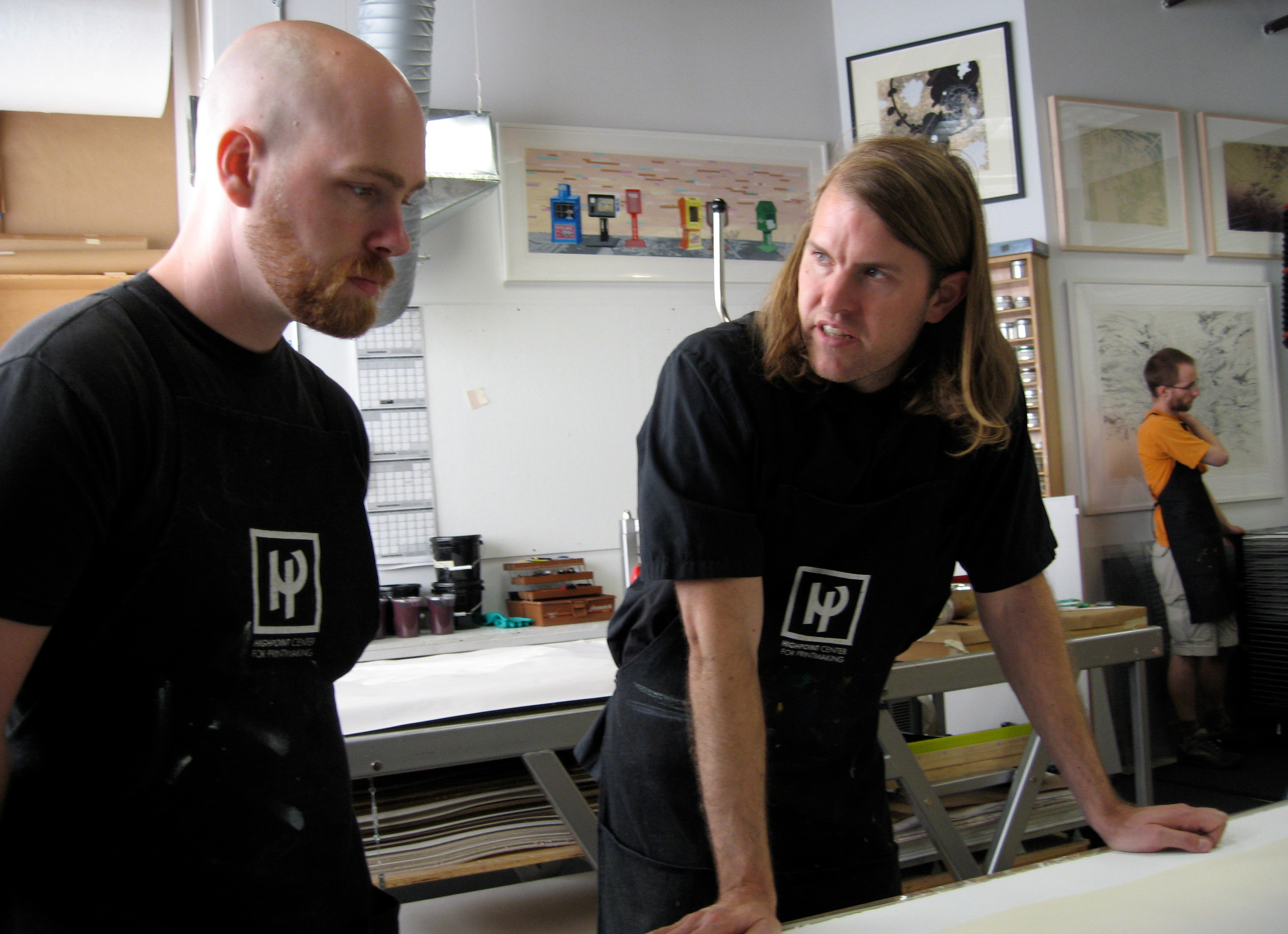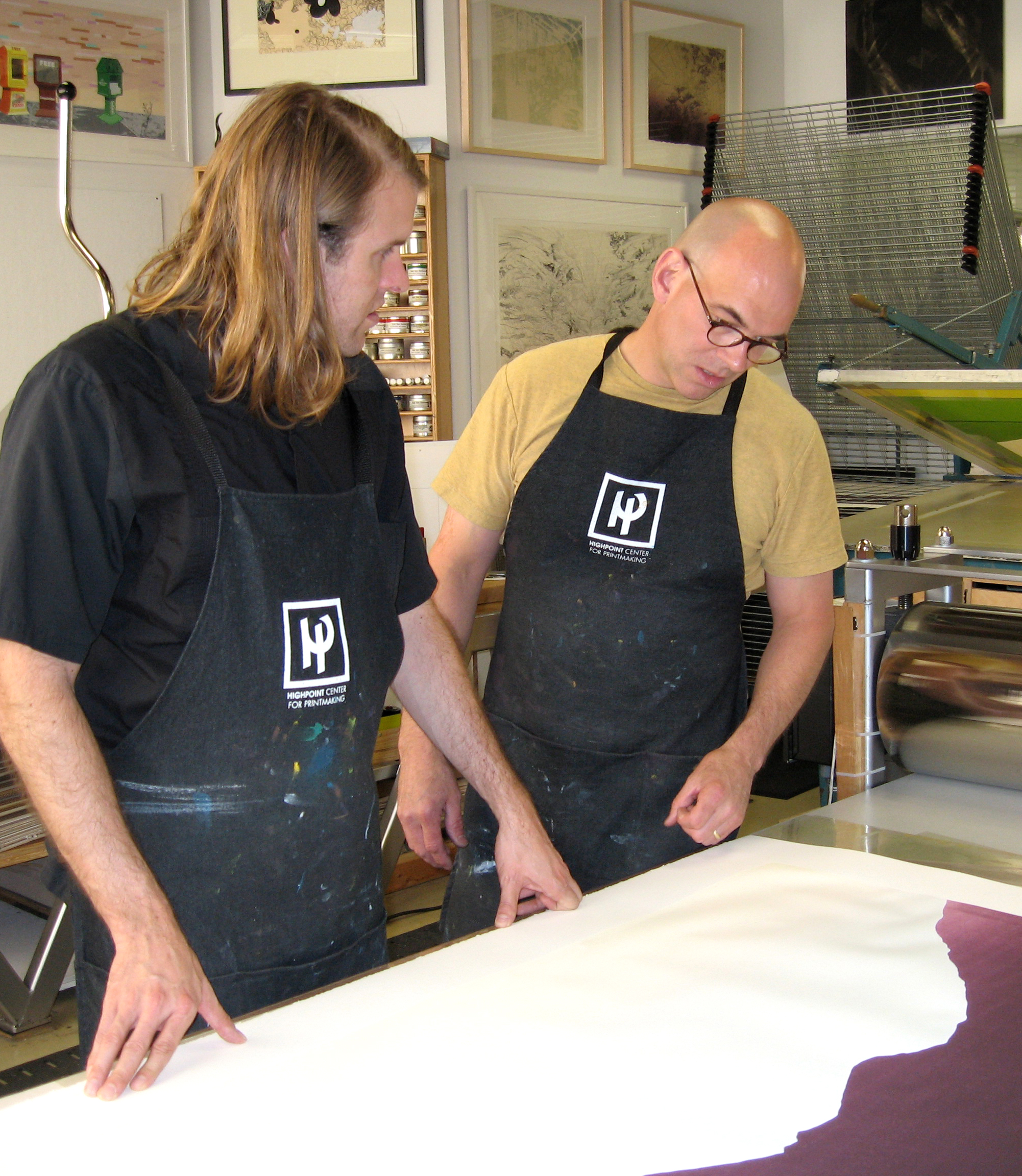
Born 1970, Seattle, Washington
Cameron Martin is interested in confounding people by applying paint so painstakingly that viewers can’t tell whether his art is made by hand or machine. And while they try to decide, Martin says, “They have more time to think about what else is going on.”1 For the first fifteen years of his career, he largely painted very smooth monochromatic landscapes made with such nontraditional materials as computer-generated stencils and spray paint. Many of his landscapes were fictional, the result of recombined and collaged photographs. Yet he specifically wanted Washington’s Mount Rainier in the Highpoint screenprint Conflation (2006) (cat. no. 183) to be a portrait of a particular place. He based it on a painting he had made after a calendar photo. He also began to document Mount St. Helens, whose eruption in 1980 rained ash on his grandparents’ home and gave the 10-year-old Martin his first taste of the sublime. In 2014 Martin turned to abstraction. For his ongoing series “Reticulations ,” he uses permanent marker and a straight edge, creating optical effects that reviewers have said suggest TV static and scrambled satellite feeds or, says the writer Dan Nadel, a tightly woven blanket. Nadel calls the drawings “little worlds of tactility and tone,” worlds where “there isn’t a clear path to find your way out.”2

The Brooklyn-based Martin attended New York University, then Brown University in Providence, Rhode Island, graduating with a BA in art and semiotics (1994). He continued studying art theory at the Whitney Museum of American Art Independent Study Program in New York (1996). Until his mid- to late twenties, however, he wasn’t sure where to direct his creativity. He spent a year in Nicaragua making a documentary on that country’s political murals, toured with the rock band United Schach Corporation, and worked on a novel. Painting won out. (“You get to a certain age and realize you can’t do everything well,” he says.) Martin used a 2010 Guggenheim Fellowship to photograph the Utah landscape for use in his art. He also received a Joan Mitchell Foundation grant (2008), Freund Teaching Fellowship (2005), Artists at Giverny (France) Fellowship and Residency (2001), and Pollock-Krasner Foundation Award (2000). In addition to participating in the Whitney Biennial (2004), Whitney Museum of American Art, New York, and other group shows, Martin has had numerous one-person exhibitions, including “Abstracts” (2017), University Art Museum, University at Albany SUNY, New York; “Focus 3: Cameron Martin” (2006), Philbrook Museum of Art, Tulsa, Oklahoma; and “Currents 97: Cameron Martin” (2006), St. Louis Art Museum. Recently, his eleven-foot-long painting Remission (2006) was featured in “Volcano! Mount St. Helens in Art” (2020), Portland Art Museum, Oregon. Martin is cochair of the painting department at the Milton Avery Graduate School of the Arts, Bard College, Annandale-on-Hudson, New York.
—Marla J. Kinney